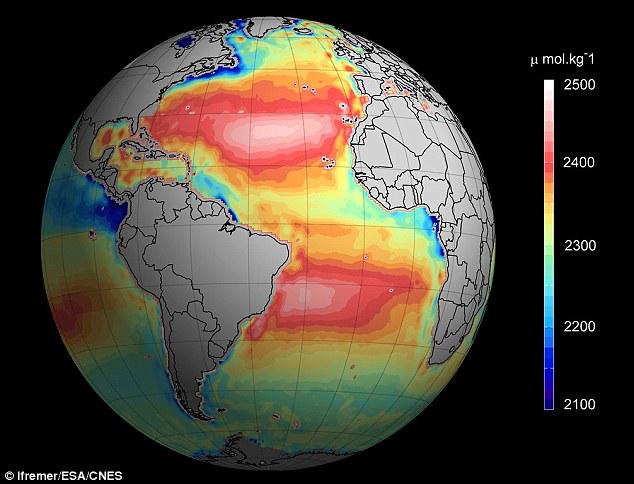showed most of the
development was south of the Miami River.
(NOAA Office of Coast Survey)
From Sun Sentinel by Ken Kayle
In 1854, six years before the Civil War, the U.S. government first
mapped the South Florida coastline, primarily to mark the depth of
shoreline waters and prevent ships from breaking up on rocks.
The
map didn't show much other than obscure landmarks such as Turkey Point, a
place that actually had turkeys, not a nuclear plant.
Over the decades,
updated maps were produced, depicting the rapid buildup of the
coastline and providing another view of history.
Now, you can see
it for yourself, free of charge.
The National Oceanic and Atmospheric
Administration's Office of Coast Survey has put all its maps on its
online site –
historicalcharts.noaa.gov.
"You see the progression of coastal changes," said agency spokeswoman
Dawn Forsythe.
"You can match them up and compare them with today's
charts."
For instance, the 1855 map shows the bulk of South
Florida's population was south of the Miami River, in what is now
downtown Miami.
Aside from Virginia Key and Key Biscayne, most of the
landmarks had unfamiliar names, such as Shoal Point, Black Point and
Elliott's Beach.
Here's the nautical map for Fort Lauderdale in 1895.
Four decades later, in 1895, a map indicated
development was spreading north.
The Fort Lauderdale area is shown
having two settlements, Lauderdale and Cocoa Palms, near what is now
Sunrise Boulevard.
By 1927, Miami, Fort Lauderdale and West Palm
Beach already were fairly well developed. However, Port Everglades still
was Lake Mabel, three to six feet deep with a rocky bottom.
By
1951, maps show the entire South Florida coastline was burgeoning with
cities, canal systems, ports, isles, bridges, tall buildings and docks.
That was the result of a land boom, said Debi Murray, chief curator of
the Historical Society of
Palm Beach County.
"The early 20
th
Century was a period of huge growth because of the Flagler railroad and
because people started selling lots like crazy," she said.
Something the maps don't clearly depict: How two Category 4 hurricanes, in 1926 and 1928, devastated the region for years.
The maps prior to those storms show South Florida's cities having
simple street grids and little coastal development.
Yet by the mid
1930s, maps show Miami, Fort Lauderdale and Miami flourishing with swing
bridges, a network of waterways, yacht clubs, radio towers and water
tanks.
In between, the region suffered miserably, Murray said.
"The
1926 hurricane put the brakes on growth and widely affect the entire
region," she said.
"The 1928 hurricane destroyed thousands of homes and
killed between 3,000 and 3,200 people – and we were already in a local
recession then."
What rescued the region was President Franklin D.
Roosevelt's Works Progress Administration in 1935, Murray said.
"It put
people to work," she said.
"We were also fortunate to have wealthy
tourists keep spending money here."
Because
the maps are nautical in nature, they show that as late as the 1920s
the inland channels sometimes were as shallow as one or two feet.
Most
were dredged to nine or 10 feet by the 1960s.
More recent maps provide
bottom depths in much more detail.
1855 U.S. Coast Survey nautical chart or map of Tampa Bay, Florida.
Centered on Passage Point, this map covers from St. Helena and Tampa south to Mullet Key and Palm Key.
Chart notes various triangulation points and the proposed site of a rail depot on the western shore. The city of Tampa is noted though, at this stage, development is minimal.
Countless depth soundings fill the bay.
To the left of the map, below the title, are detailed sailing instructions and notes on tides and shoals. This is one of the earliest Coast Survey charts to focus on Tampa Bay.
The hydrography for this map was completed by O. H. Berryman.
The chart was produced under the supervision of A. D. Bache, of the most prolific and influential Superintendents of the U.S. Coast Survey.
NOAA's Office of Coast Survey,
based in Silver Spring, Md., was established in 1807 at the behest of
President Thomas Jefferson, who wanted nautical maps drawn to improve
shipping safety and to help the young nation's military better defend
itself.
"Knowing more boats were destroyed by accident than war,
they decided they needed to do a survey of the coast," Forsythe said.
"The first charts came out in the mid 1830s. We've been doing it ever
since."
Maps
were not produced every year – in the 1800s and well into the 1900s, it
could take five to 10 years to produce a single map of a region.
It was
a painstaking process.
Survey teams would measure water depths by
dropping a lead ball attached to rope over the side of a ship until it
hit bottom.
Then they would move about 500 feet and do it again, going
back and forth, like a "mower over a lawn," Forsythe said.
Then engraved copper plates and a lithograph were used to produce a map.
Despite
that tedious process, in the past 180 years, the Office Coast Survey
has accumulated 35,000 historical maps of the entire U.S. coastline,
covering about 3.4 million square miles.
"Now cartographers sit in
front of computers," Forsythe said.
"About 150 charts are updated each
week with critical corrections, available digitally."
While the
maps are mainly used by the marine community, they also have been used
by movie production companies to ensure accuracy of sets for given time
eras.
And the behind-the-scenes data used to compile the maps has been
used to develop storm surge prediction models, Forsythe said.
She added that the maps make great gifts for history and marine buffs.
"They are really cool to sit there and explore. It's another way of looking at history," she said.






